Year 2 Multiplication and Division Worksheets
Doubling Numbers to 20 Multiplication
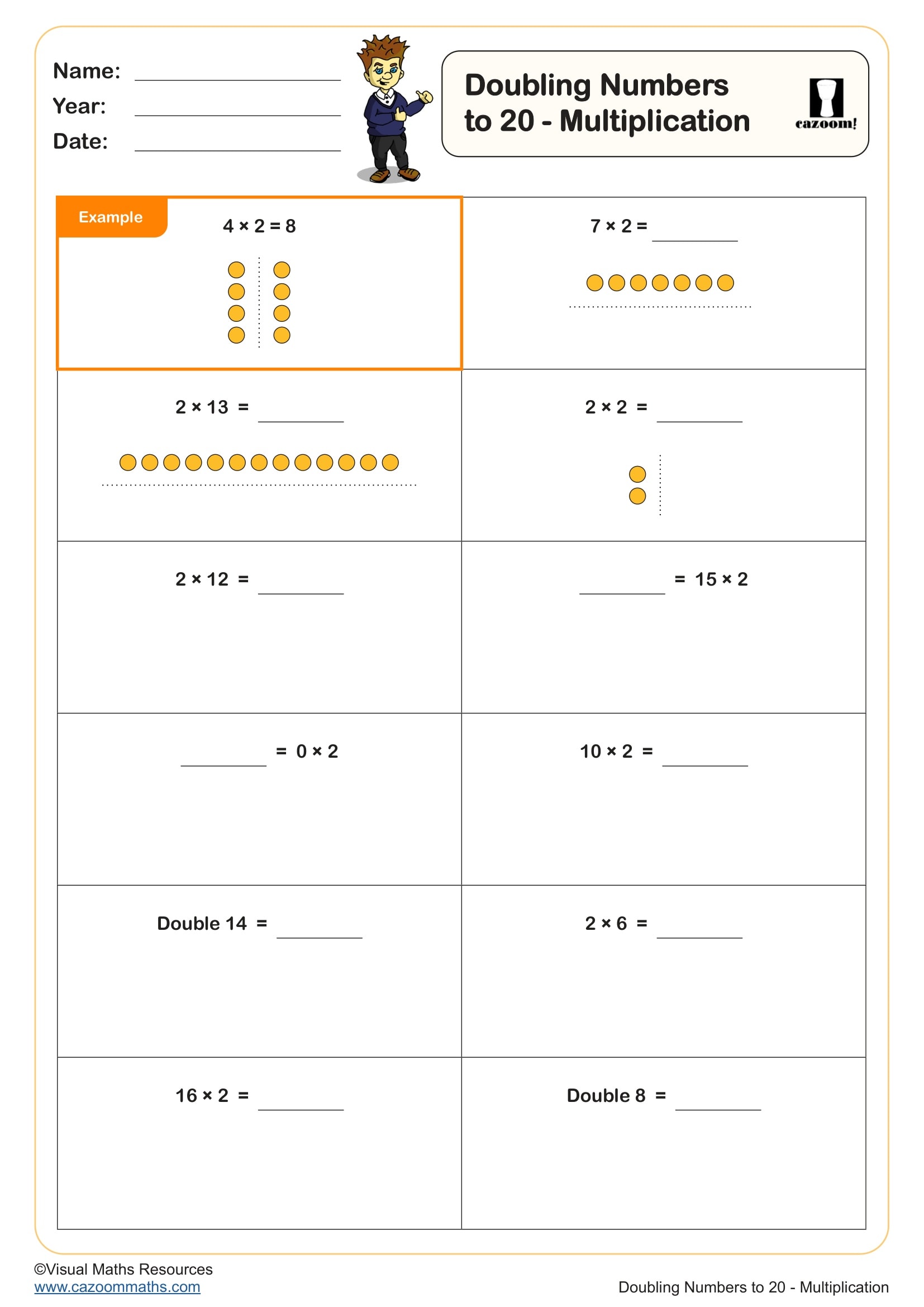
Halving Numbers to 20
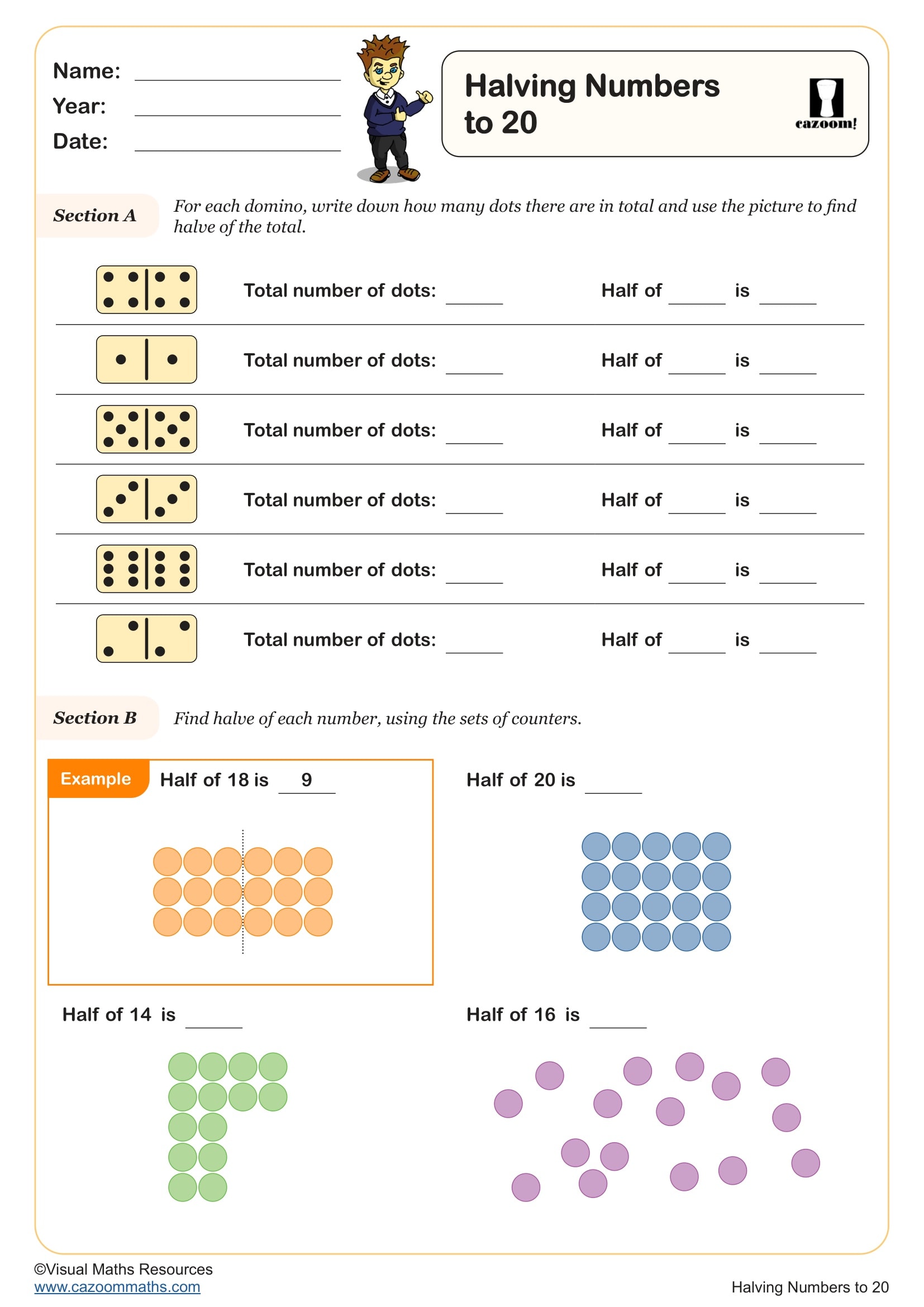
Introducing the Multiplication Symbol
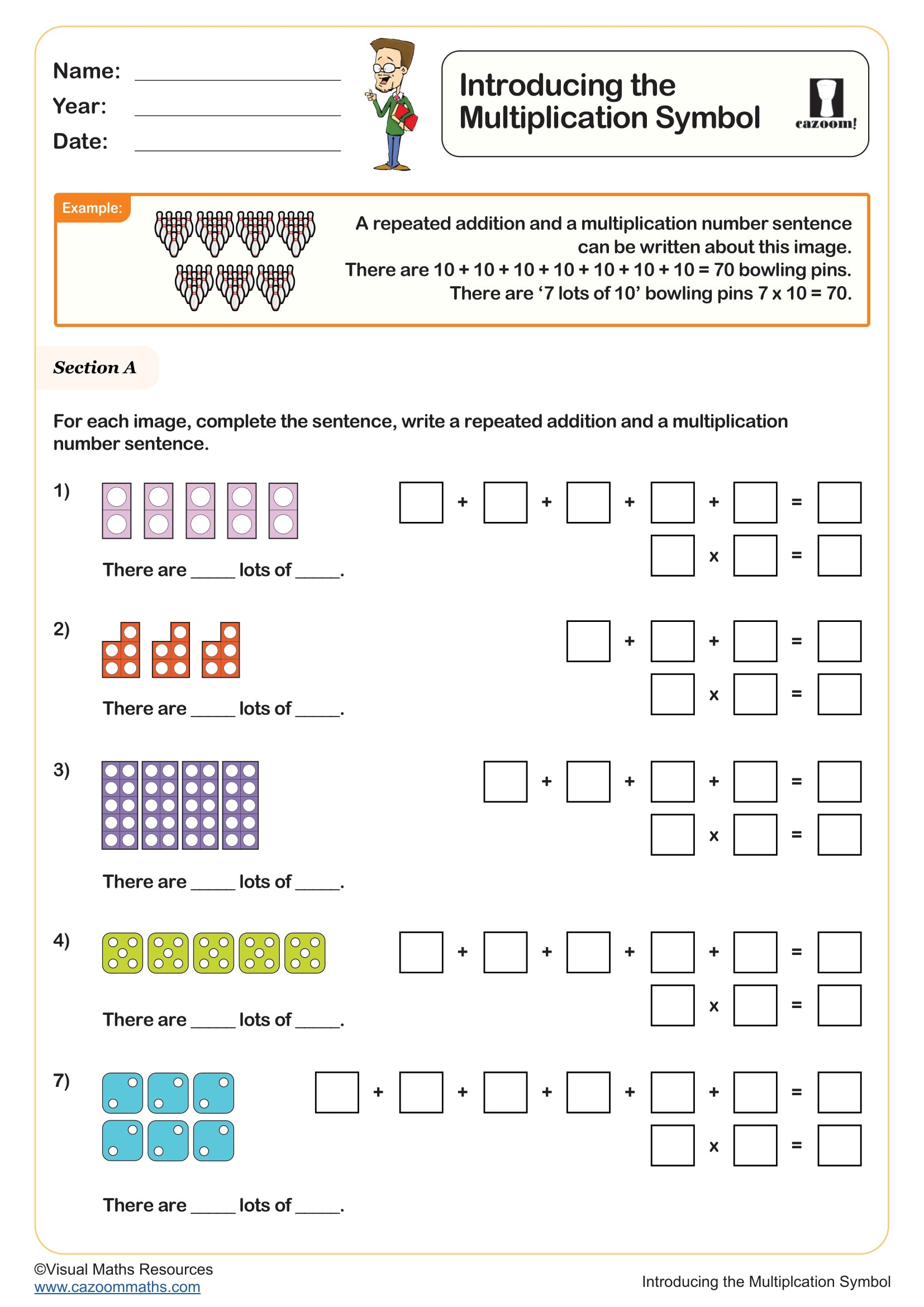
Multiplication and Division Fact Families
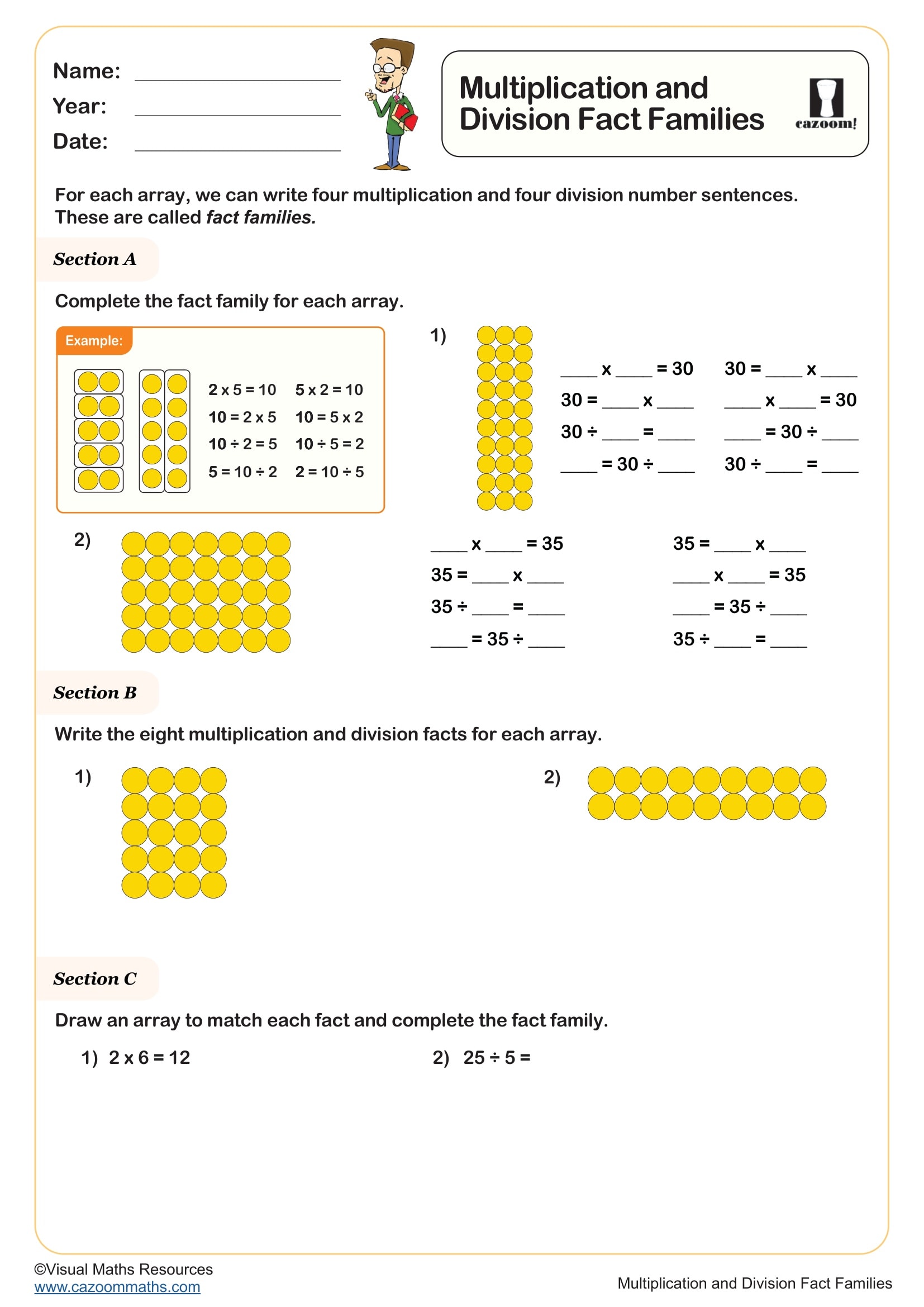
Odd and Even Numbers (A)
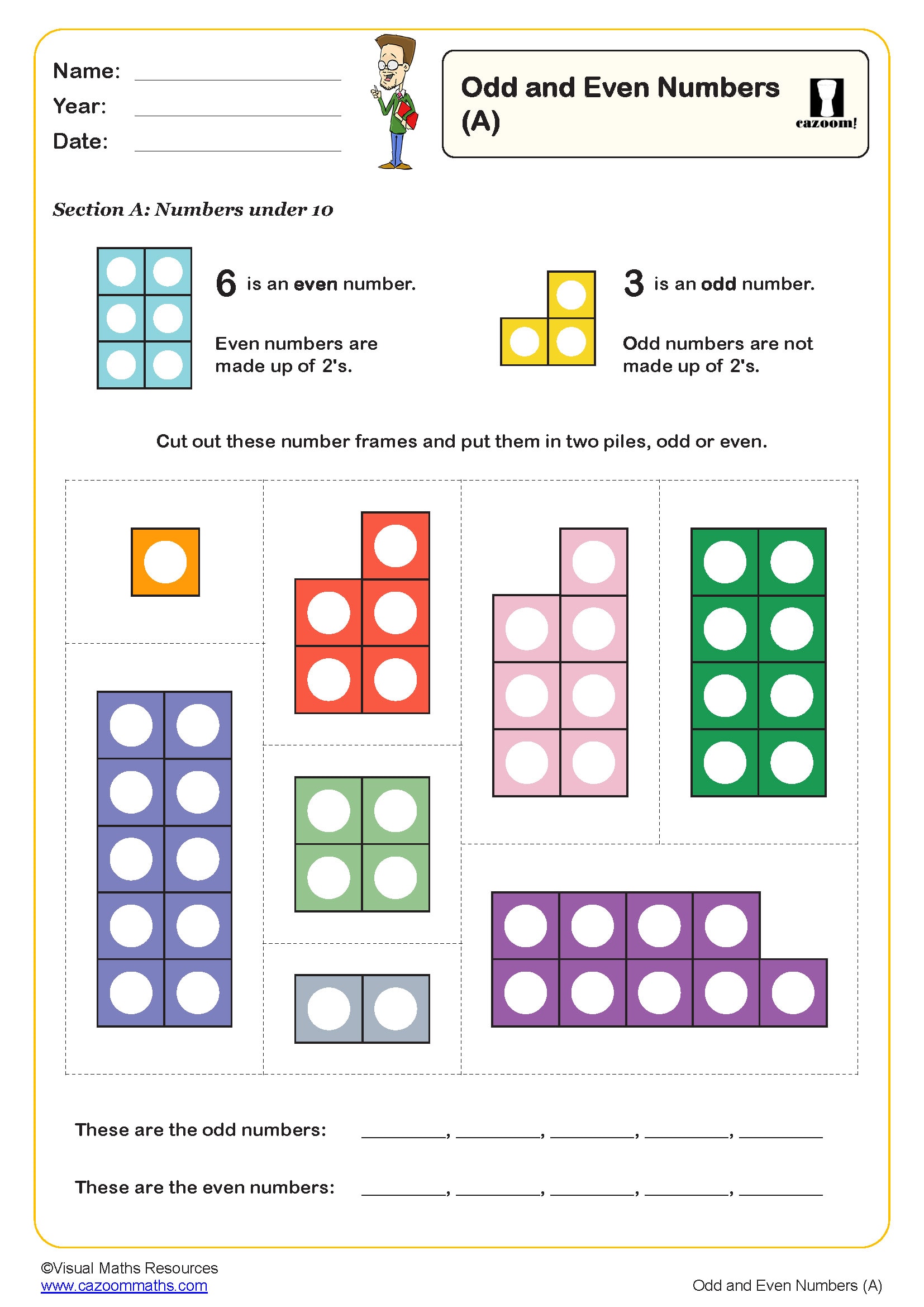
Odd and Even Numbers (B)
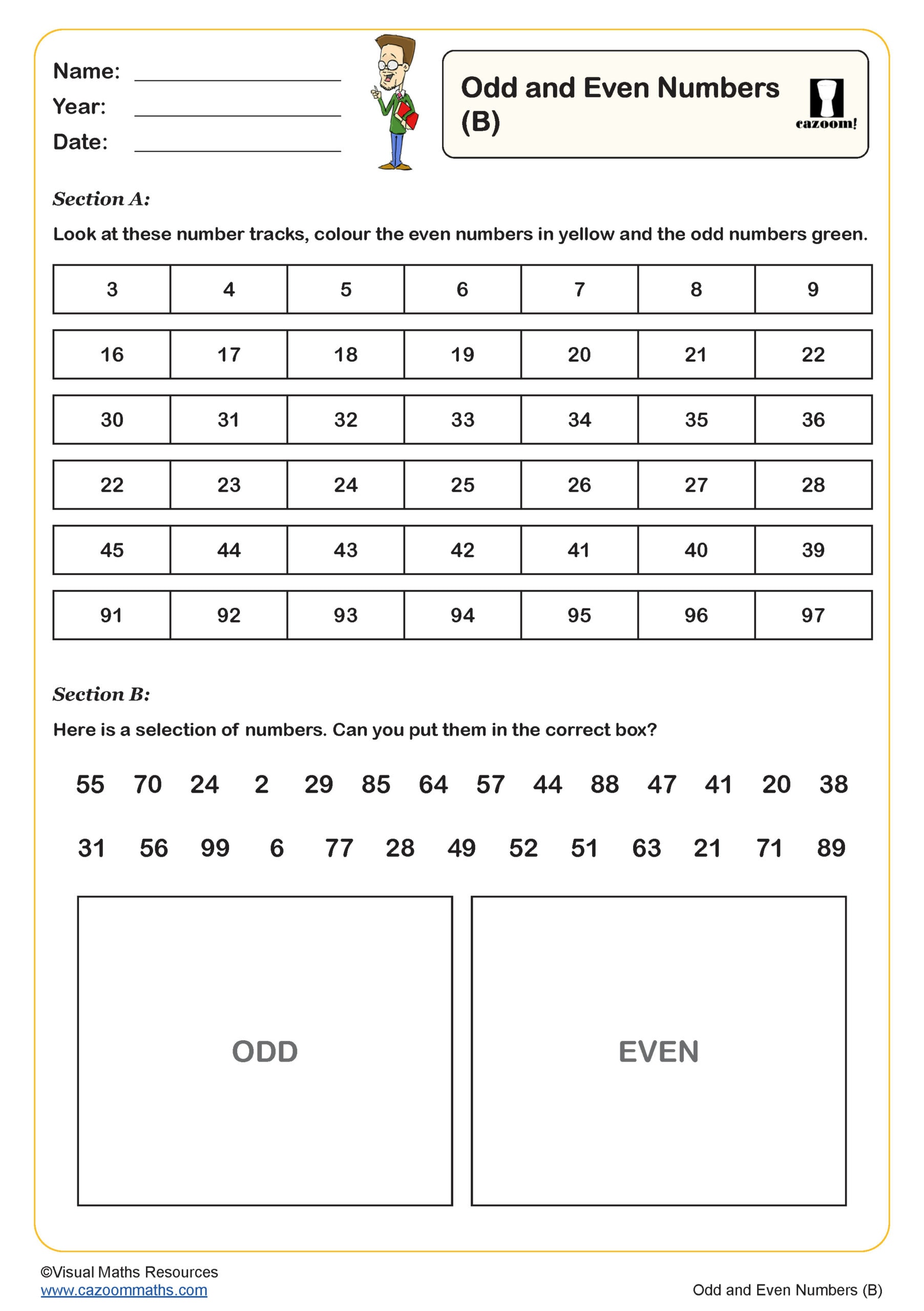
The Eight Times Table
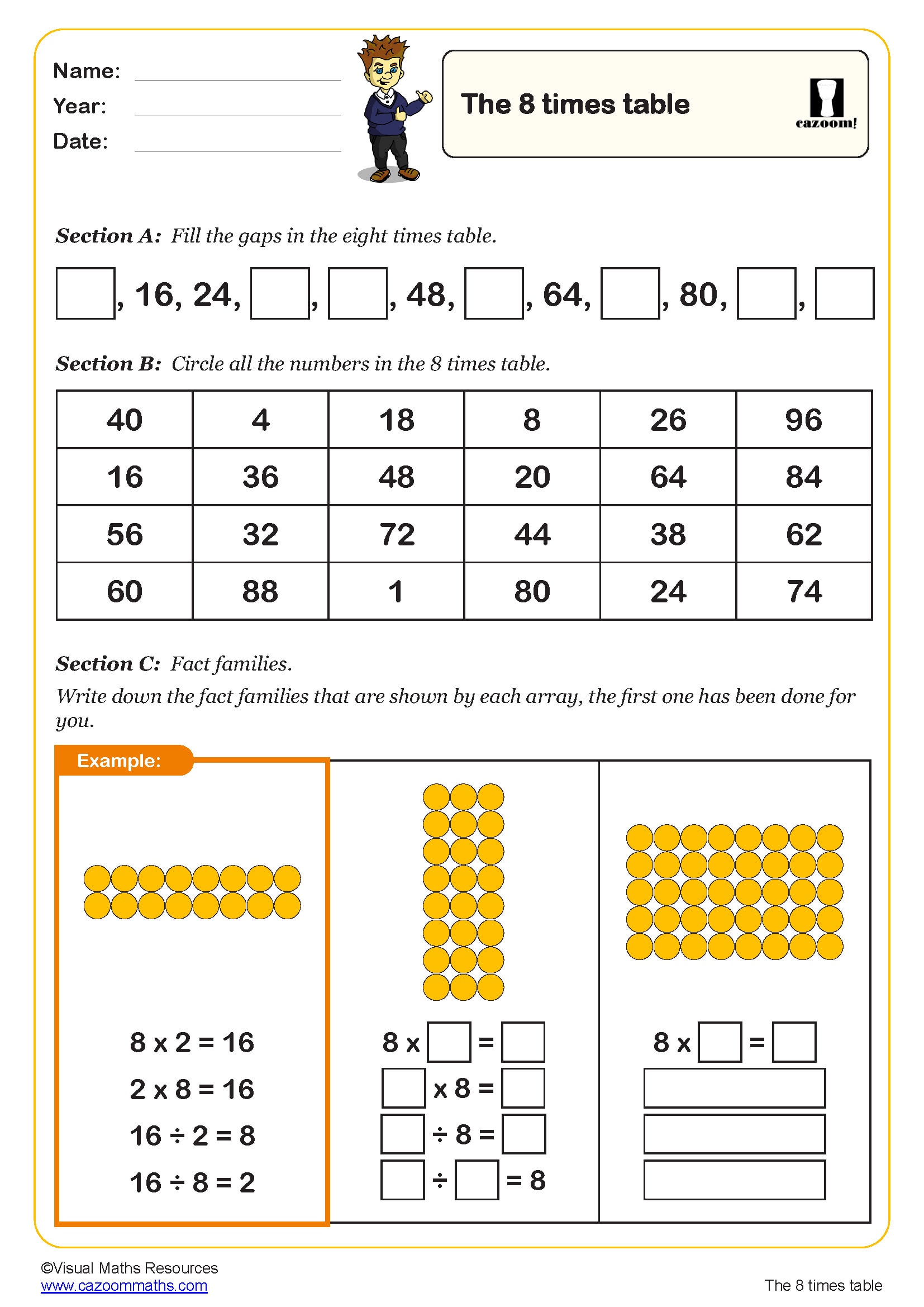
The Five Times Table

The Four Times Table

The Ten Times Table

The Three Times Table

The Two Times Table

Using Arrays

Multiplication Worksheets for Year 2 with Pictures PDF - Instant Download
Our printable PDF resources combine colourful visual aids with carefully graded exercises that build confidence rather than confusion. Each of these ready-to-use worksheets comes with detailed answer sheets that show the working process, making it easier for teachers and parents to explain the 'why' behind each answer. Students love the picture-based approach because it connects abstract numbers to concrete objects they can actually visualise and count.
How to Do 2-Digit Multiplication: Step-by-Step KS1 Activities
What are Multiplication and Division?
Multiplication is simply a faster way of adding the same number over and over again - instead of writing 3 + 3 + 3 + 3, we can just say 4 × 3 = 12. Think of it as counting groups of things, like having 4 bags with 3 sweets in each bag, which gives you 12 sweets altogether.
On the other hand, Division is the opposite of multiplication - it's about sharing things equally or working out how many groups you can make. When we divide 12 by 3, we're asking "how many groups of 3 can we make from 12 things?" or "if we share 12 things equally between 3 people, how many does each person get?"
The progression moves from concrete grouping activities through to the introduction of multiplication symbols and basic division concepts. Students particularly enjoy the double-digit multiplication activities that use visual arrays and grouping methods. Each worksheet builds systematically on previous learning, covering repeated addition, equal groups, sharing equally, and those crucial first steps towards understanding times tables that'll serve them brilliantly in Year 3.
Why Year 2 Multiplication and Division Worksheets Boost Exam Confidence
Students who receive solid practice with multiplication and division worksheets for Year 2 show significantly better number sense by the end of the year. These foundational skills aren't just about memorising facts - they're about developing logical thinking patterns that make all future maths topics more accessible. Regular worksheet practice builds that essential confidence that turns "Maths is hard" into "Actually, this makes sense!"
Benefits our teachers report:
• Improved problem-solving confidence
• A better understanding of number relationships
• Stronger foundation for Year 3 times tables
• Enhanced logical reasoning skills
• Greater enthusiasm for mathematical challenges
Real-World Examples: When Do Year 2 Students Use Multiplication and Division?
In reality, multiplication and division thinking appear constantly in their everyday experiences. Whether they're sharing playground equipment fairly, working out how many weeks until their birthday, or helping pack party bags, these skills pop up everywhere. It's actually quite satisfying when students start spotting these patterns themselves and realise they're already mathematical thinkers.
Real-world applications include:
• Sharing sweets or toys equally among friends
• Calculating weeks, days, and simple time problems
• Working out sports team arrangements and groups
• Understanding cooking measurements and portions
• Organising classroom materials and resources
• Basic money calculations and pocket money planning